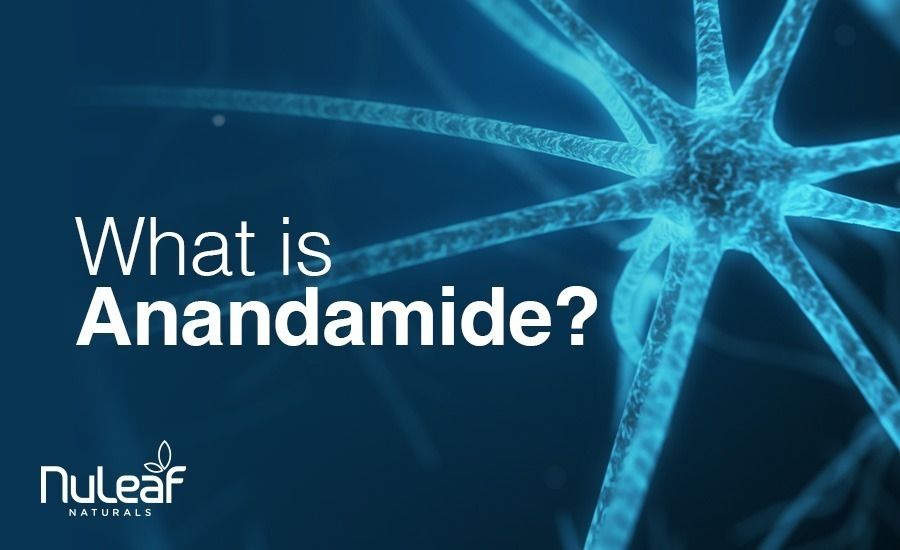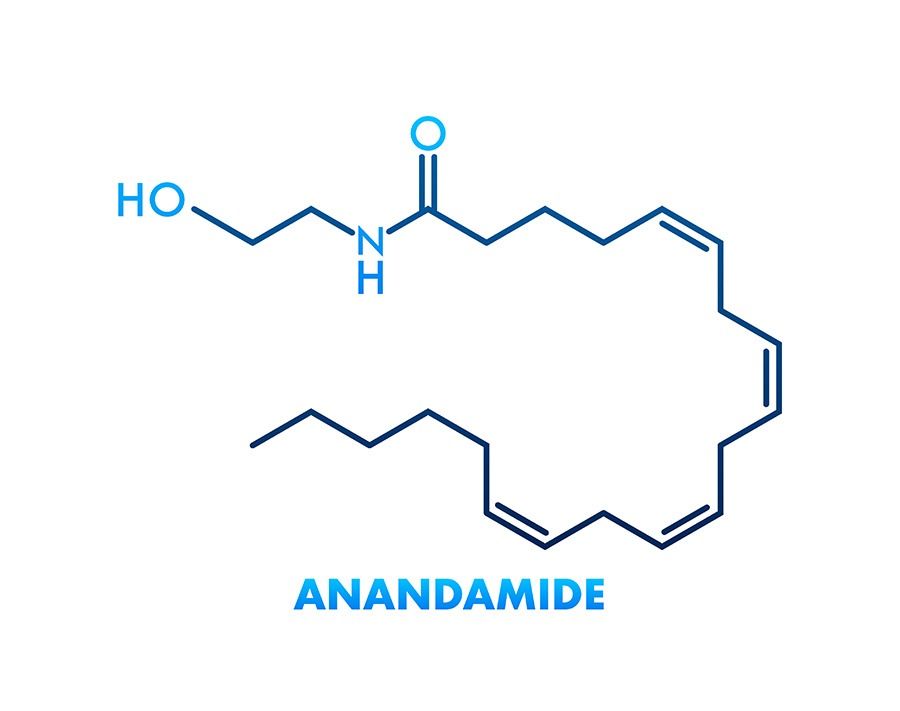What is Anandamide? A Guide to the Bliss Molecule

Almost all cannabis lovers have heard of CBD (cannabidiol) and its famous cousin, THC (tetrahydrocannabinol), but what about endocannabinoids?
These naturally occurring cannabinoids are produced by our bodies as part of the complex Endocannabinoid System (ECS). This system is responsible for keeping our bodies in balance or homeostasis.
CBD and THC, on the other hand, aren’t produced naturally and have to be obtained through external sources like oils, topicals, tinctures, smoked flower, or edibles.
There are a few known endocannabinoids, but the most famous is anandamide. In this blog post, we’ll take a closer look at this helpful endocannabinoid that plays an essential role in optimizing many of our physiological processes.
Endocannabinoids: A Quick Intro
Our bodies are full of complex networks like the digestive system, central nervous system, respiratory system, and circulatory system. One of the lesser-known networks is the Endocannabinoid System (ECS), which is present in all mammals and some other animals.
As mentioned earlier, the ECS is partly responsible for many physical and mental processes, such as regulating mood, pain perception, appetite, sleep, and managing stress and anxiety.
Endocannabinoids are a critical part of the ECS, together with enzymes and receptors, all of which naturally occur in our bodies. Learn more about the endocannabinoid system.
What is Anandamide?
There are two naturally occurring endocannabinoids found in the human body: Anandamide and 2-arachidonoylglycerol (2-AG).
Anandamide has its name derived from the Sanskrit word “Ananda,” meaning bliss, hence its nickname, the “bliss molecule.” Anandamide can also be called AEA after its complete name (N-arachidonoylethanolamine).
When your body is out of balance, it will trigger the release of anandamide to restore it. The compound interacts with two endogenous cannabinoid receptors, the CB1 and CB2 receptors, to achieve balance and homeostasis in the body.
Once the anandamide has done its job, it is degraded by fatty acid amide hydrolase (FAAH). This regulation limits the effects of anandamide and controls its effects.
CBD (cannabidiol) slows the inhibition of anandamide by the FAAH and, hence, can prolong the effects of anandamide in the body, which tends to account for the relaxed, calm feelings that CBD is known for. However, research is still in its preliminary stages, and more clinical trials must be done to fully understand the effects of CBD.

Potential Benefits of Anandamide
Anti-Tumor
More than 20 years ago, anandamide was found to inhibit breast cancer cell growth. Anandamide was found to selectively slow the growth of human breast cancer cells in vitro and restrict cancer cell lines known to express estrogen.
In addition, the study found that anandamide can slow down cell growth, and this might happen because it reduces the making of prolactin receptors, which are needed for the hormone’s action. This, in turn, leads to a decrease in the product of the brca1 gene, which is a cancer marker.
Cardiovascular Wellness
Cannabinoids have long been known to have hypotensive effects. One study found a correlation between manipulating the ECS to control blood pressure, heart disease, and hypertension.
It is also suggested that new therapies involving anandamide could significantly improve the quality of cardiovascular patients. Some applications modulated by the ECS are currently in preclinical and clinical stages.
Appetite Stimulation
A 2001 study done on rats found that administering anandamide caused a slight improvement in appetite. This could have potential uses for cancer patients undergoing chemotherapy or patients with liver or kidney disease.
Anti-Nausea
Some studies found that cannabinoids can be used to reduce nausea and vomiting and also potentially benefit cancer patients who are undergoing chemo.
Pain Management
Because of the effect that the ECS has on the CB1 and CB2 receptors, the use of cannabinoids might be helpful in altering pain perception. One such study found that rats that were administered anandamide showed analgesic effects and reduced responses to inflammatory triggers.
Anti-Inflammatory
A recent study done in 2020 found that anandamide has unique anti-inflammatory properties that could reduce inflammation in smooth muscle cells. The compound showed that it could potentially reduce the movement of immune cells to inflamed areas.
While all the research so far has proved promising, more research is needed into the potential benefits of anandamide before any hard and fast claims can be set in stone.
CBD and Anandamide
CBD works not by interacting with the CB1 and CB2 receptors but by other aspects of the body, such as other neurotransmitters like serotonin and dopamine, as well as the FAAH enzyme.
The FAAH enzyme degrades anandamide, and with CBD inhibiting its effectiveness, it may increase the level of anandamide in the body.
Final Thoughts
Anandamide is a lesser-known compound of the endocannabinoid system but no less important. Its use has been widely known to improve overall well-being, although research is in its infant stages.